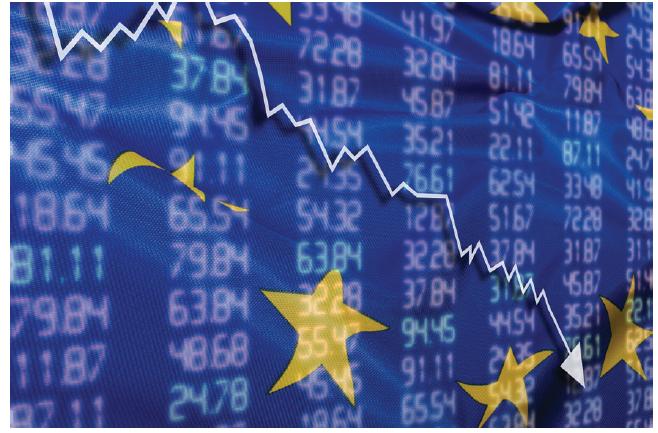The subprime mortgage crisis of 2008 and the now famous failure of investment bank Lehmann Brothers in
Question:
The subprime mortgage crisis of 2008 and the now famous failure of investment bank Lehmann Brothers in the United States brought the world’s financial system to the brink of chaos in what became known as the global financial crisis. Even the acronym ‘GFC’ became commonly used in everyday speech. Hundreds of banks in the United States and other countries collapsed, and governments injected ‘fiscal stimulus packages’ into economies, aimed at spending their way out of — or at least delaying the onset of — the recession they feared. Once proud icons of industry appealed for increasingly large government grants and loans, and banks that had previously been free with credit tightened loan criteria to the point at which some businesses failed for want of operating capital. Even the United States government did the formerly unthinkable and virtually nationalised banks (as did the British government), and made staggeringly large ‘loans’ to big business, just to keep the economy turning over. Large and formerly profitable companies like insurance giant AIG and car empires General Motors and Chrysler suffered severely. United States President Barack Obama told them their bailout support would not continue, and that they could not expect to live on as ‘wards of the state’. Management had to accept the downside of their behaviour along with the upside they had enjoyed for years. Ordinary people were furious as their superannuation funds were savaged while corporate high flyers took large bonuses. The crisis became an enduring downturn, and many household names simply disappeared from the market.
By 2009, it was clear that this was not just a temporary downturn. Leaders of nations, including Australia, joined together in an unprecedented initiative for coordinated action. It took a year of fiscal stimulus by Western governments before optimism and signs of global recovery emerged. The tightly regulated Australian banking sector remained conservative throughout the GFC; while the banks needed and got government guarantees, they had no need of the rescues required by their foreign counterparts.
The speed with which the global financial crisis took hold in many of the world’s countries showed our degree of international interconnectedness, as organisations everywhere cut production and laid off staff in a struggle to survive. Share markets tanked, commodity prices fell quickly, and even the oil price sank within months from US$140 per barrel to less than US$40 per barrel, only to resume former price levels within a year. Unemployment rates in both rich and poor countries rose relentlessly, housing prices dropped by a third or more in many countries, and people watched their wealth erode. Managers were put under pressure to somehow, anyhow, keep people in meaningful work. Jobs became the new mantra, as millions — in the United States, Asia, Australia, the United Kingdom, and elsewhere — lost the employment they thought was secure. The war for talent became the war for survival, and human resource management was in the front line, trying to save people’s jobs and keep organisations operating in a business environment of turbulence and uncertainty. It was a shakeout of monumental proportions. Some firms restructured and cut costs to become more efficient and succeeded. Others folded.
By 2015, seven years on from the start of the GFC, equities markets had gone sideways; the United States economy had shown only sporadic recovery; and China was enduring a slowdown of its previously high growth rate. India, and Brazil were not showing the robust optimism hoped for. It is an understatement to say that business confidence in the West was severely damaged. Whole countries had their securities downgraded to junk bond status — Greece became a mendicant nation, propped up by Germany in a fragile Eurozone that had lived beyond its means for too long without making the reforms necessary for economic stability. Greece particularly suffered severe austerity measures in return for bailout finance from other European countries. European finance ministers needed to loosen monetary policy to stimulate demand, but to keep a tight rein on fiscal policy to allow massive debt to be serviced. Even the Euro currency itself sank to unanticipated lows against the United States dollar. In Australia the exchange rate dropped from parity with the US$ to only 70c to the US$ as the prices of mineral resources bottomed and Chinese demand for coal and iron ore declined.. Queensland alone exports one third of the world’s coking coal (the kind used to make steel), and estimated reserves of coal seam gas in that one state are sufficient to power a city of a million population for a thousand years. Meanwhile, huge deposits off the northwest shelf are being tapped and the gas exported to nearby Asia with its burgeoning appetite for energy and iron ore. The Pilbara area in Western Australia has iron ore for at least 30 years of exports.
It is instructive to reflect that in 2012 the Australian dollar was predicted to remain stubbornly high for some time to come, and companies were advised to adapt or perish in this new operating environment. Export prices offered strong growth, but costs also rose; by 2012, the pressure for operational efficiency and sound corporate strategy assumed centre stage. Past booms have ended in inflation and recession, so close attention is being given to ensuring this wealth does not evaporate, and to upgrading infrastructure to support a different kind of economy in the years ahead. Sustainable energy availability and reliable water supply are obvious considerations. Though the A$ is less coupled to the US$ than before, if inflation rebounds in a slow United States recovery, Australia’s exchange rate will fall and its terms of trade will decline. There is also the likelihood of Australia catching the ‘Dutch disease’, a term coined in the 1970s to describe how ownership of natural gas pushed up the Dutch exchange rate to levels where manufacturing became less competitive. However, abundance (having lots of resources) is different from dependence (having a high proportion of exports in resource-related industries). The key is whether Australia can develop the infrastructure and political institutions to spread the benefits across the economy and develop other sectors too.1 Regardless, a slowing global economy in 2015 was a drag on Australian growth. The formerly high Australian dollar had meant Australians could travel internationally far more readily. However, this had the downside of making Australian-manufactured goods — and the formerly profitable tourism sector — less competitive on world markets, so factory closures and job losses became disturbingly frequent media headlines.
By 2015, the reverse swing had occurred and a lower A$ ushered in the expected rebound in (especially Chinese) inbound tourism and manufactured goods became profitable again as more products could be sold for lower prices internationally, and with higher margins.
What is the significance of this for managers? More than ever, the business environment is telling organisations everywhere that if they are to survive, they need to be better managers of their assets and better leaders of their people. Even Hollywood, when it was not offering escapism with stories about unpopular wars, was quick to capitalise on a trend and reflect both fear and favour, releasing movies showing organisations selling off toxic assets to unsuspecting buyers and terminating the employment of loyal and productive staff. Romantic comedies took a back seat to risk management. Movies, as a barometer of the times, showed that the tough decisions demanded by the new workplace could be better made by managers with a strong moral compass. Business ethics became ranked with finance as important topics to be studied, in a new age of uncertainty.
QUESTIONS
1. Was there a simple cause of the economic downturn of the first decade of the twenty-first century, and is there a simple solution?
2. What can we learn from the responses by the Greek government to the financial downturns in 2012–15?
3. Do you think that 2016–18 are likely to be years of slow and steady recovery, and what are the likely implications for managers in Australian, New Zealand and Asian companies?
4. How risk averse should the individual manager be? What factors might influence your answer?
Step by Step Answer:

Management
ISBN: 9780730329534
6th Asia Pacific Edition
Authors: Schermerhorn, John, Davidson, Paul, Factor, Aharon, Woods, Peter, Simon, Alan, McBarron, Ellen





